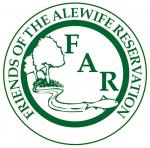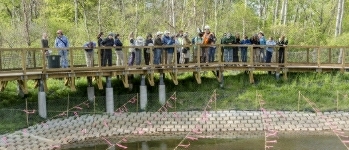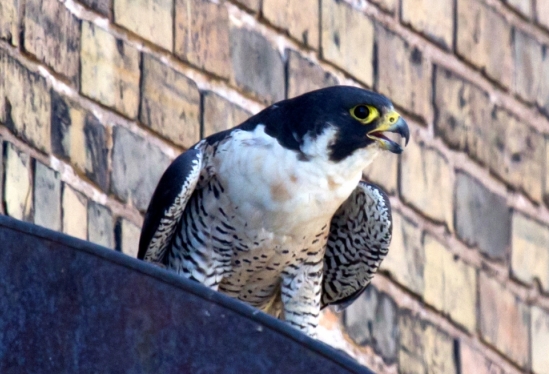By Julie Cohen, The Current,
Wednesday, February 12, 2014 - 08:30,
Santa Barbara, CA
http://www.news.ucsb.edu/2014/013947/cities-support-more-native-biodiversity-previously-thought
Cities Support More Native Biodiversity Than Previously Thought
Researchers at NCEAS compile the largest global dataset of urban birds and plants, which shows world’s cities retain a unique natural palette
The rapid conversion of natural lands to cement-dominated urban centers is causing great losses in biodiversity. Yet, according to a new study involving 147 cities worldwide, surprisingly high numbers of plant and animal species persist and even flourish in urban environments — to the tune of hundreds of bird species and thousands of plant species in a single city.
Contrary to conventional wisdom that cities are a wasteland for biodiversity, the study found that while a few species — such as pigeons and annual meadow grass — are shared across cities, overall the mix of species in cities reflects the unique biotic heritage of their geographic location. The findings of the study conducted by a working group at UC Santa Barbara’s National Center for Ecological Analysis and Synthesis (NCEAS) and funded by the National Science Foundation were published today in the Proceedings B, a journal of the Royal Society of Biological Sciences.
“While urbanization has caused cities to lose large numbers of plants and animals, the good news is that cities still retain endemic native species, which opens the door for new policies on regional and global biodiversity conservation,” said lead author and NCEAS working group member Myla F. J. Aronson, a research scientist in the Department of Ecology, Evolution and Natural Resources at Rutgers, The State University of New Jersey.
The study highlights the value of green space in cities, which have become important refuges for native species and migrating wildlife. This phenomenon has been named the Central Park Effect because of the surprisingly large number of species found in New York’s Central Park, a relatively small island of green within a metropolis.
Unlike previous urban biodiversity research, this study looks beyond the local impacts of urbanization and considers overall impacts on global biodiversity. The research team created the largest global dataset to date of two diverse taxa in cities: birds (54 cities) and plants (110 cities).
Findings show that many plant and animal species, including threatened and endangered species, can flourish in cities, even as others decline or disappear entirely. Cities with more natural habitats support more bird and plant species and experience less loss in species as the city grows. Overall, cities supported far fewer species (about 92 percent less for birds and 75 percent less for native plants) than expected for similar areas of undeveloped land.
“We do pay a steep price in biodiversity as urbanization expands,” said coauthor Frank La Sorte, a research associate at the Cornell Lab of Ornithology. “But even though areas that have been urbanized have far fewer species, we found that those areas retain a unique regional flavor. That uniqueness is something that people can take pride in retaining and rebuilding.”
Conserving green spaces, restoring native plant species and adding biodiversity-friendly habitats within urban landscapes could, in turn, support more bird and plant species. “It is true that cities have already lost a substantial proportion of their region’s biodiversity,” said Madhusudan Katti, a faculty member in the Department of Biology at California State University, Fresno. “This can be a cup half-full or half-empty scenario. If we act now and rethink the design of our urban landscapes, cities can play a major role in conserving the remaining native plant and animal species and help bring back more of them.”
The human experience is increasingly defined within an urban context, the authors noted. They maintain it is still possible for a connection to the natural world to persist in an urban setting, but it will require planning, conservation and education.
“Given that the majority of people now live in cities, this group’s synthesis of data on plant and urban plant and animal diversity should be of broad interest to ecologists as well as urban and landscape planners,” said Frank Davis, NCEAS director.
Contact Info:
Julie Cohen
julie.cohen@ucsb.edu
(805) 893-7220
- Home
- Directions
- FAR Wildlife Blog
- Calendar
- News
- Donate Now
- Get Social!
- Storm Water Wetlands
- Plants and Restoration
- Photos
- Videos
- About & Projects
- Master Plan for Alewife
- Archive
- Newsletters
- Contact
 Presentation Spotlighting Alewife Reservation
Presentation Spotlighting Alewife Reservation
 Follow us on Twitter
Follow us on Twitter
 Like us on Facebook
Like us on Facebook
 Follow us on Instagram
Follow us on Instagram
Forward our web address to a friend!
- An Urban Gem - Alewife Reservation Nature Preserve
- Envisioning The Silver Maple Forest
- History and Policies of Cambridge, Belmont, and DEP
- Storm Water Wetlands
- Friends of Alewife Reservation brochure
(front, back) - Technical Analysis of Upper Alewife Basin
- Watershed: An Excursion in Four Parts
- The River Is A Restless Spirit: Life in the floodplain forest
-
Assessment of Silver Maple forest for DEP Adjudicatory hearings and
Patrick Fairbairn, author of the Assessment - Community Native Garden Flora
The
Alewife Reservation
is a unique natural resource for the communities of Belmont, Arlington and Cambridge
and home to hundreds of species, including hawks, coyotes beavers, snapping turtles, wild turkeys and muskrats,
the reservation is a unique natural resource for the community.
Historical information (Powerpoint)
Friends of Alewife Reservation works to protect and restore this wild area and the surrounding area for the water quality, native plants, animals and over 90 bird species with paths for walking, running and biking, recreation, and for classroom education and research. We regularly steward and preserve the Reservation area for wildlife and for the enjoyment of present and future generations.

(video)
By-Laws
About Friends of Alewife Reservation
Statement of Purpose
Citizen Forester newsletter archive
The Birds of the Cambridge Region of Massachusetts

by William Brewster 1906
Nuttal Ornithological Society
Biodiversity Study of Alewife Reservation Area: Species, Habitat, Ecosystems

Inventories by David Brown, wildlife assessor (2003, 2004.) Published by and available from FAR for $10. Write or call for your copy. (sample)
Updated Dave Brown Inventories (2008, 2010)
Inventories of Alewife Reservation Wetland Plants by Walter Kittredge, Botanist (2013)


